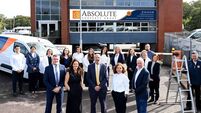How to stick to your New Year's resolutions

STARTING the new year with good intentions is one thing, but most of us know making those resolutions stick is a different story. Could productivity ‘hacks’ help us keep to our goals? You may have heard of habit stacking, for example - but what does it actually mean?
“Habit stacking is a proven formula, which means you attach a new habit to a well-established one you already have,” she adds.
“When you stack your habit, you’re linking your new habit to one that is already existing, which makes it cognitively easier for you to do as you’re able to make the link between the two behaviours, effectively wiring your brain to make the connection.”
For instance, imagine an existing habit is brushing your teeth, and you want to introduce a new habit of standing on one leg. If you stack them, your brain will learn to associated brushing your teeth with standing on one leg.
“Brushing your teeth is the ‘anchor’ for the new habit,” adds Kudzi.
Keen to give it a go? Here’s how habit stacking can help New Year’s resolutions stick...
“Most resolutions are too daunting and people struggle to even get started. For instance, if your goal is to lose weight, break it down to what you would do differently each day - only buy healthy food, no chocolate; eat a full breakfast; substitute biscuits for fruit at 4pm. Small achievable steps are key,” says Jeremy Campbell, CEO of performance improvement and technology business, Black Isle Group (blackislegroup.com).
This might look like very small, simple actions - but they will help. In fact, this approach could bolster your chances.
This approach can make implementing changes easier.
“For instance, if you want to exercise more when you get home from work - if the first thing you do normally is change out your work clothes, alter your routine so you put on your exercise clothes at the same time. The old habit needs to be a cue for the new one,” says Campbell.
It is worth looking at what you already do in your day, because that is how you will find a solid habit to anchor from.
“What do you do every day - clean your teeth, walk the dog, make a cup of tea when you wake up? When you’re really clear about these, add a new habit tight on the back of these daily routines,” says Campbell.
If your new habit is too vague, it’s easy to avoid.
“Make it obvious and very clear,” says Campbell.
Setting numbered targets can help, says Kudzi. “For example, I say as soon as I drop my kids at school, I go for a walk in the forest for at least 10 minutes: I often do more, but it’s a really clear instruction to my brain,” she says. “Giving something a number helps the brain,”
“When you reward the new habit with something positive and pleasurable, you are strengthening your neural pathways with dopamine. If you anticipate a reward, your brain releases dopamine, indicating that this is a behaviour you want to repeat,” explains Kudzi.
Celebrating when habits start to stick will help too. “When we celebrate, we release powerful emotional chemicals in our brains which make us feel happy. Feeling good about achieving something is the greatest spur.”







 App?
App?


